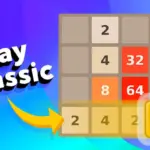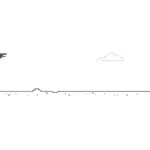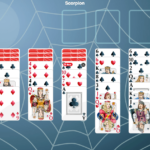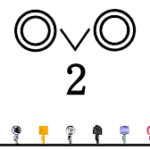“The world of Naruto has captivated manga and anime fans for decades, with its intricate ninja system and compelling character development. One of the most significant shifts in the series occurred after the time skip, dramatically altering the shinobi system and the dynamics of the ninja world. To learn more about how these changes have impacted the narrative and characters we’ve come to love, visit borutotwobluevortex.mobi. This article delves into the evolution of the shinobi system post-time skip, exploring these transformations in detail.
The Foundation of the Shinobi System
Before we dive into the changes, it’s essential to understand the basics of the shinobi system as established in the early parts of Naruto. The ninja world was divided into hidden villages, each serving as a military force for their respective countries. Genin, Chunin, and Jonin ranks formed the backbone of this system, with missions and training structured around these hierarchies.
The Academy served as the starting point for young ninjas, teaching them fundamental techniques and preparing them for the challenges ahead. This system created a sense of order and progression that fans could easily follow and relate to.
Technological Advancements and Their Impact
One of the most noticeable changes after the time skip is the integration of technology into the shinobi world. While chakra-based techniques remain central to ninja operations, we see an increasing reliance on scientific ninja tools and other technological advancements.
Scientific Ninja Tools
The introduction of scientific ninja tools has revolutionized combat and mission execution. These devices allow users to perform jutsu without the need for hand signs or extensive chakra control, potentially leveling the playing field between naturally gifted shinobi and those who might struggle with traditional techniques.
Communication and Intelligence Gathering
Improved communication systems and surveillance technology have changed how missions are conducted and information is shared between villages. This shift has led to more collaborative efforts between nations and a reduced emphasis on village-specific secrets.
Shifting Political Landscape
The aftermath of the Fourth Great Ninja War brought about significant political changes that reshaped the shinobi system. The formation of the Shinobi Union and increased cooperation between villages have altered the traditional competitive dynamics.
Inter-Village Cooperation
Where once hidden villages operated in isolation or direct competition, we now see unprecedented levels of cooperation. Joint missions, shared intelligence, and collaborative research efforts have become commonplace, fostering a more unified shinobi world.
Peacetime Adjustments
With the relative peace following the war, many shinobi have had to adapt their roles. Some have transitioned into more civilian-oriented positions, while others focus on maintaining peace rather than engaging in combat. This shift has led to a reevaluation of what it means to be a shinobi in times of peace.
Evolution of Ninja Training and Education
The post-time skip era has seen significant changes in how young ninjas are trained and educated. The traditional Academy system has evolved to meet the demands of a changing world.
New curricula have been introduced to address the technological advancements and changing political landscape. Students now learn about diplomatic relations and the importance of inter-village cooperation alongside traditional ninja techniques. This holistic approach aims to produce well-rounded shinobi capable of thriving in both combat and peacetime roles.
The Role of Kage in the New Era
The position of Kage, once primarily focused on military leadership and village protection, has evolved to encompass broader responsibilities. Kage now play crucial roles in international diplomacy, technological advancement, and maintaining the delicate balance of peace.
This shift is perhaps most evident in Naruto’s role as Hokage. His leadership style emphasizes cooperation, understanding, and peaceful resolution of conflicts, marking a departure from the more militaristic approaches of previous generations. If you’re interested in exploring how the evolution of the Kage position continues in the Boruto universe, you can Read Boruto: Two Blue Vortex Manga Free Online.
Challenges to the Traditional Shinobi Way
The changing landscape has not been without its challenges. Some traditionalists within the shinobi world view these changes with skepticism, fearing the loss of traditional values and skills.
Balancing Tradition and Progress
One of the central conflicts in the post-time skip era is the struggle to balance traditional shinobi values with the needs of a modernizing world. This tension is explored through characters who must reconcile their traditional training with new expectations and technologies.
The Threat of Complacency
With the extended period of peace, there’s a growing concern about complacency among younger shinobi who haven’t experienced the hardships of war. This has led to debates about maintaining combat readiness in peacetime and the potential vulnerabilities it might create.
The Impact on Character Development
The evolving shinobi system has profoundly impacted character development, particularly for the next generation of ninjas. Characters like Boruto, Sarada, and their peers face challenges unique to their era, grappling with the legacy of their parents while navigating a rapidly changing world.
This generational shift provides rich storytelling opportunities, exploring themes of legacy, progress, and the true meaning of being a shinobi in a world that seems to need them less for traditional combat roles.
Conclusion
The transformation of the shinobi system after the time skip reflects broader themes of progress, peace, and the challenges of maintaining tradition in a changing world. These changes have not only reshaped the narrative landscape of Naruto but have also provided fans with new perspectives on beloved characters and the world they inhabit.
As the story continues to unfold, it’s clear that the evolution of the shinobi system will remain a central theme, offering endless possibilities for character development and world-building. The blend of traditional ninja arts with modern technology and changing societal norms creates a rich, complex world that continues to captivate manga fans around the globe.
We’d love to hear your thoughts on how the shinobi system has changed. How do you think these changes have affected your favorite characters or storylines? Share your experiences and opinions in the comments below!
































